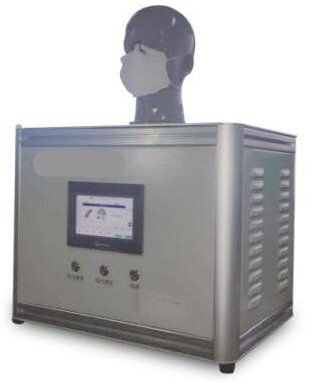-
Mask inhalation and exhalation resistance tester - test procedure
Edited by:Read:Mask inhalation and exhalation resistance tester - test procedure
1. Working principle:
The mask inhalation and exhalation resistance tester mainly measures the inhalation and exhalation resistance under a single fault condition when the flow rate is 50 L/min (for example, when the anti-asphyxia valve is opened (connected to the atmosphere)).
Second, the implementation of standards:
Designed and manufactured in compliance with the relevant provisions of the YY 0671-2021 standard.

Three, technical indicators
Fully automatic detection, no manual on duty
Automatic generation of measurement results and generation of print data
Specifications: suitable for various specifications
7-inch Weiluntong LCD touch screen
Select high-precision measurement, automatic reset
Chinese and English operation interface switching
1 set of professional fixtures;
Control system: PLC;
Head model: 1;
Built-in stainless steel breathing pipe;
Test software: American CSI test software
Set pressure gauge: 0-3000pa, accuracy: ±1%;
Setting time: arbitrary setting by the customer Accuracy: 0.2S
Flow meter range: 0-200L/MIN
High-precision oxygen pump breathing function
The instrument is in accordance with the standard: the upgrade service is stipulated.
The free warranty period for the equipment is 1 year.
Four, test steps
a) Connect a variable flow source capable of generating air flow to the flow measurement device.
b) Connect the flow measuring device to the dummy head with the artificial airway or other suitable item capable of sealing the mask.
c) Connect the pressure gauge to the mask.
d) Close the patient connection port on the mask or any flow port (such as a pressure port) on the mask that is known not to open during normal operation.
e) Open all normal connections to the air.
f) Set the variable flow rate to -50 L/min.
g) Read the suction pressure on the manometer.
h) Set the variable flow to + 50 L/min.
i) Read the expiratory pressure on the manometer.
- 2024-04-19Paper ring compression strength tester standards
- 2024-04-19Cupping tester standards
- 2024-04-19Rubber and plastic tensile tester standards
- 2024-04-19Taber 1750 wear-resistant tester standards
- 2024-04-19Stone Chip Resistance Gravelometer standards
- 2024-04-18Diaper absorption speed tester standards
- 2024-04-18Diaper leakage tester technical indicators
- 2024-04-18Paint film impact resistance tester standards
- 2024-04-18Low temperature brittleness tester principle
- 2024-04-18Battery separator permeability tester technical indicators



